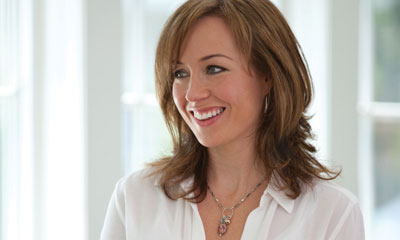About six months ago, when we started planning what we casually referred to as our “fearless” issue, I began reflecting on what fear means to me and how it has operated in my own life. I started by asking myself what fear feels like, and I got one answer: constriction.
Whenever I am afraid, I realized, everything begins to contract. My body, my heart, my mind, my peripheral vision, my voice, my sense of possibility — it all starts to feel cramped and contained in an uncomfortable way, a way that makes me feel (and act) smaller than I really am.
This is the insidious part of fear. It makes us shrink and recoil, when often what we are really being confronted with is an opportunity to grow. It inclines us to be far less capable and generous than we normally are, and to see far fewer possibilities than we might otherwise see.
Out of our constricted thought and behavior comes a compromised result. This convinces us that we are, in fact, not all that smart or strong or deserving, and we go on to make ever smaller choices and to live in evermore shrunken, shriveled ways. It’s a vicious cycle tightly wrapped in a self-fulfilling prophecy.
Last month, I received a lovely gift from my Genius Pact collaborator, Jacque. (For more on our project, see ELmag.com/geniuspact.) She gave me Brené Brown’s new book, Daring Greatly: How the Courage to Be Vulnerable Transforms the Way We Live, Love, Parent, and Lead (Gotham, 2012). Then, just a few days before we sent this issue to print, I picked up another great book, Facebook COO Sheryl Sandberg’s Lean In: Women, Work, and the Will to Lead (Knopf, 2013), which explored some of the same territory.
I found both books to be jaw-droppingly good and so packed with important insights (for both genders) that I wouldn’t begin to attempt a summary of either here. Instead, I will share three of their common messages that resonated most strongly with me.
(1) Be willing to have courageous conversations. Speaking our truth — telling people what we really think, desire, see and feel — is often all that stands between us and powerful, positive change. But such revelations can be daunting, especially when we feel strongly and there’s a lot at stake. If there’s a courageous conversation that needs to happen in your world (with a friend, partner, coworker or family member), you’ve probably known it for a while. The sooner you get clear about your truth and state it in an openhearted way, the better your life will get. Which brings me to . . .
(2) Stay open-hearted. Many times, when we are facing difficult or frightening situations, we harden ourselves, close off our hearts and begin relating to people as opponents, obstacles or threats. We go into an armored, win-lose way of relating, when in many cases, the reason the situation feels so charged and scary in the first place is simply that we care so very much. (For more on that, see our feature, “The End of Fear”.) The more we are willing to present our truth in the context of our authentic hopes and desires, the better our courageous conversations and our related life opportunities tend to play out.
(3) Do some decloaking. The term “decloaking” is one I borrowed from Susie Bright, an erotica expert who talks about it in the context of owning whatever turns us on. But I’ve come to think about decloaking as deeply owning who you are and what makes you tick in any life context. At work, in relationships, at a soul level — who are you really? Too often, we allow our shame or fear of other people’s judgment (or our fear of our own unfettered awesomeness) to stop us from answering that question honestly. I recently stumbled across an unattributed quote that nicely sums up the value of decloaking: “Be weird. Be random. Be who you are. Because you never know who would love the person you hide.”
I think the biggest message I took away from both Brown’s and Sandberg’s books — and also from our work on this issue of the magazine — is that while recognizing our fears and vulnerabilities is a good thing, allowing them to constrict us rarely serves us well.
We do better when we are willing to stretch, to grow toward the outer reaches of our comfort zones rather than shrinking away from them. This issue is a great place to start stretching.



This Post Has 0 Comments